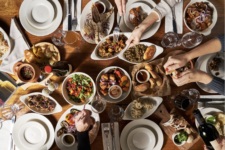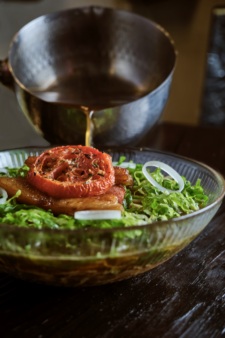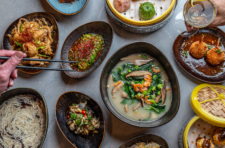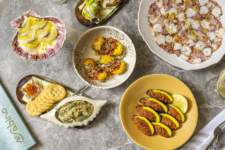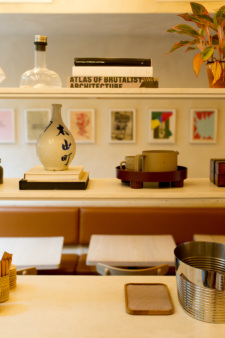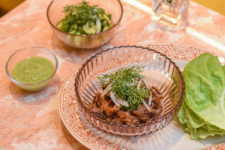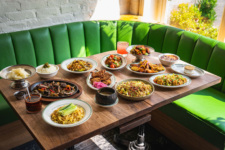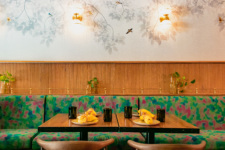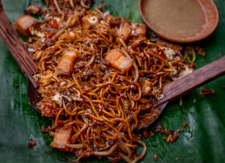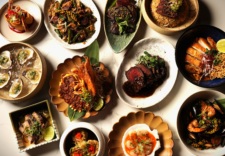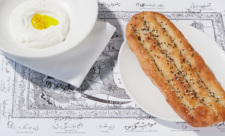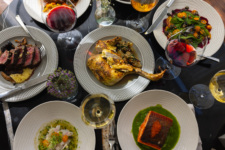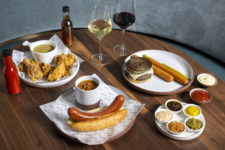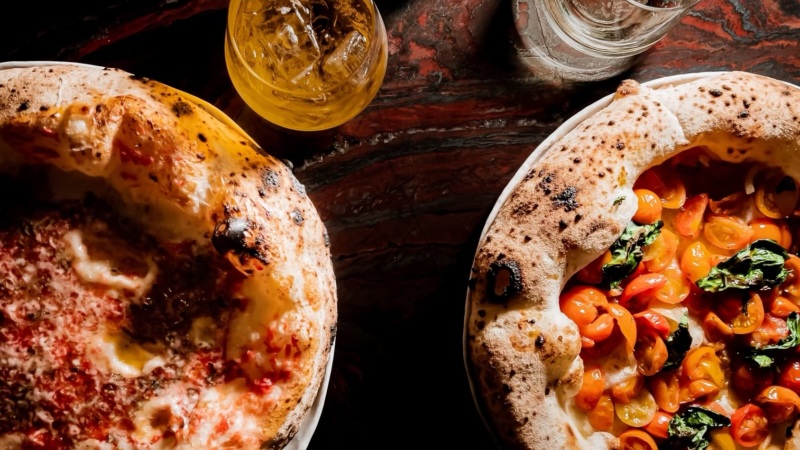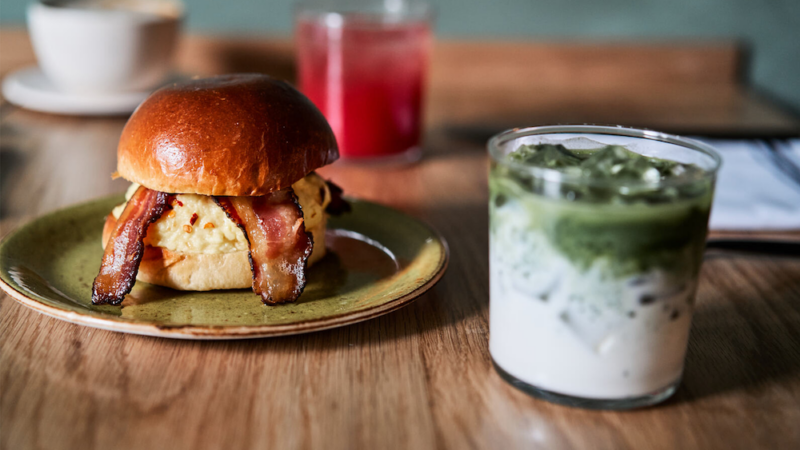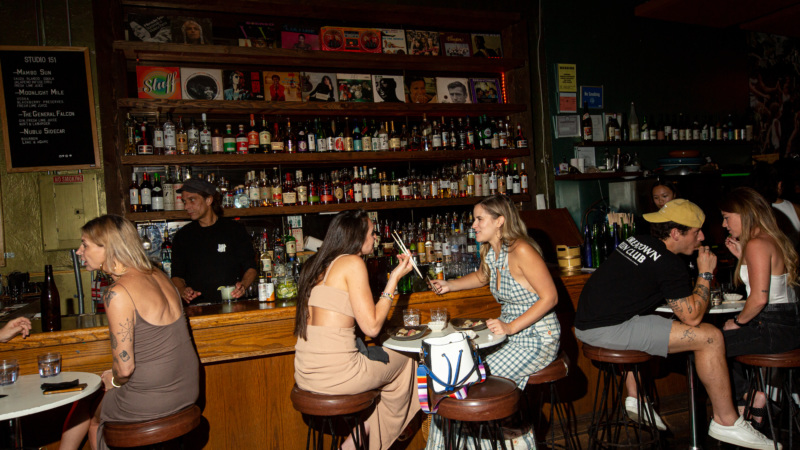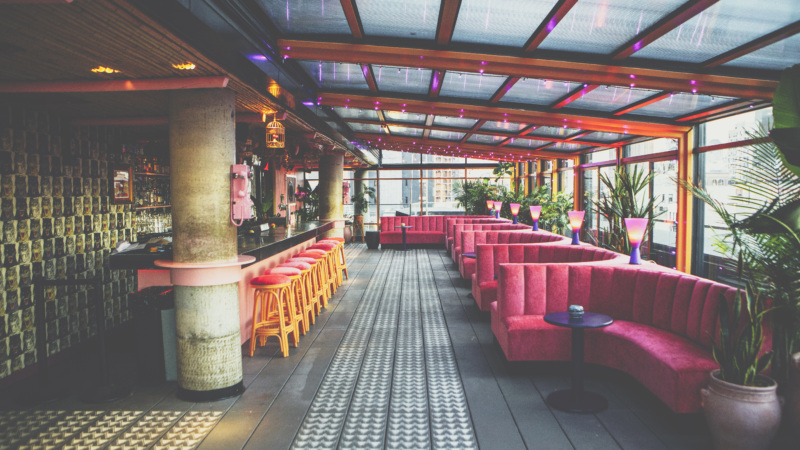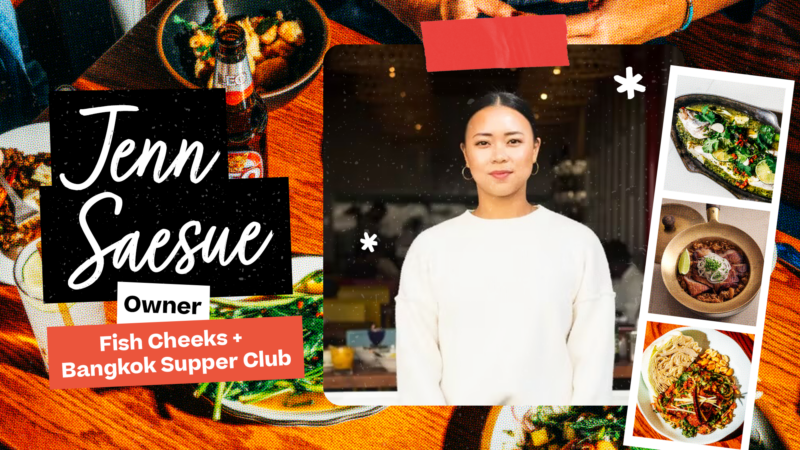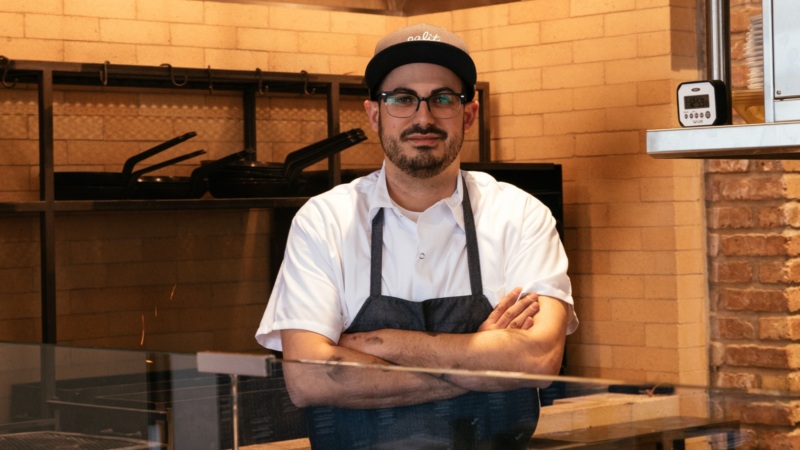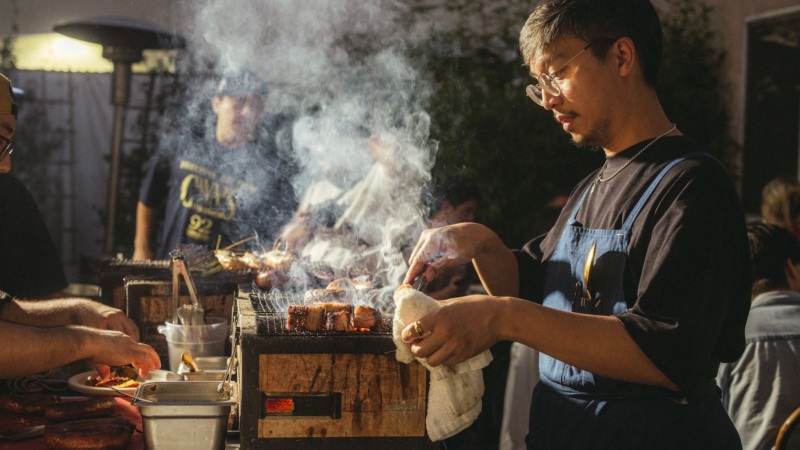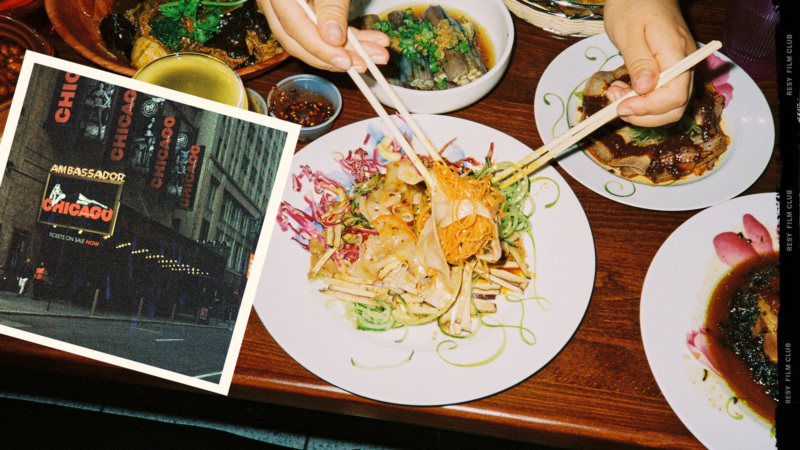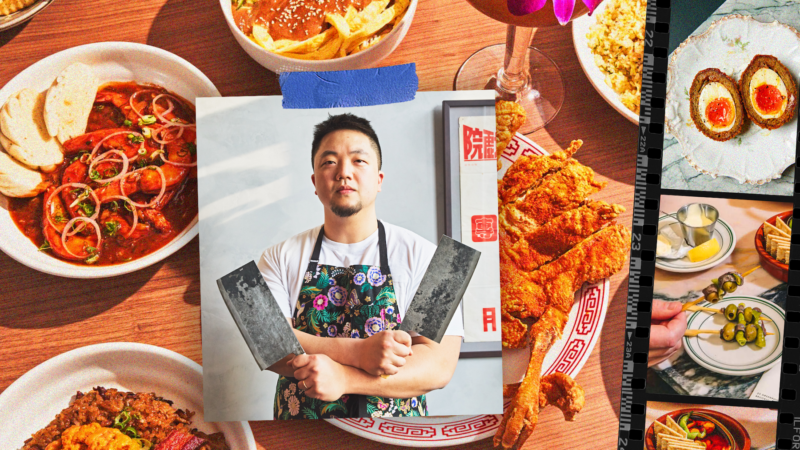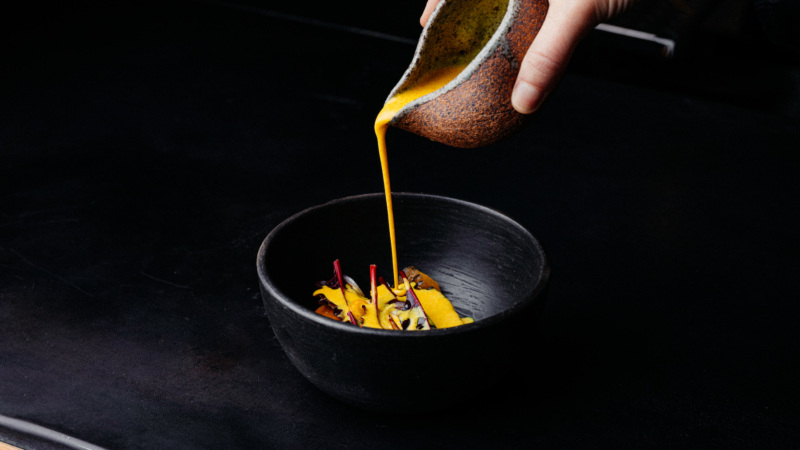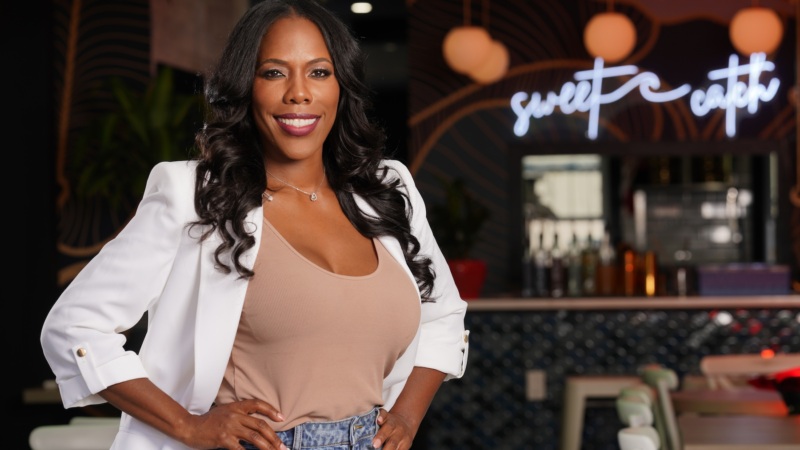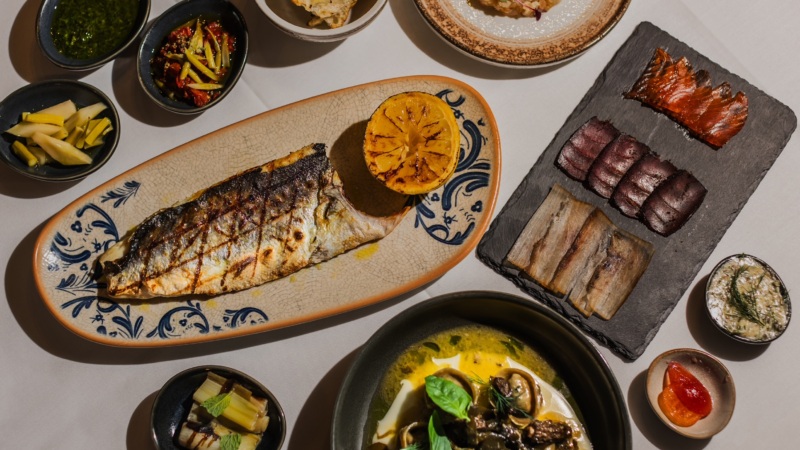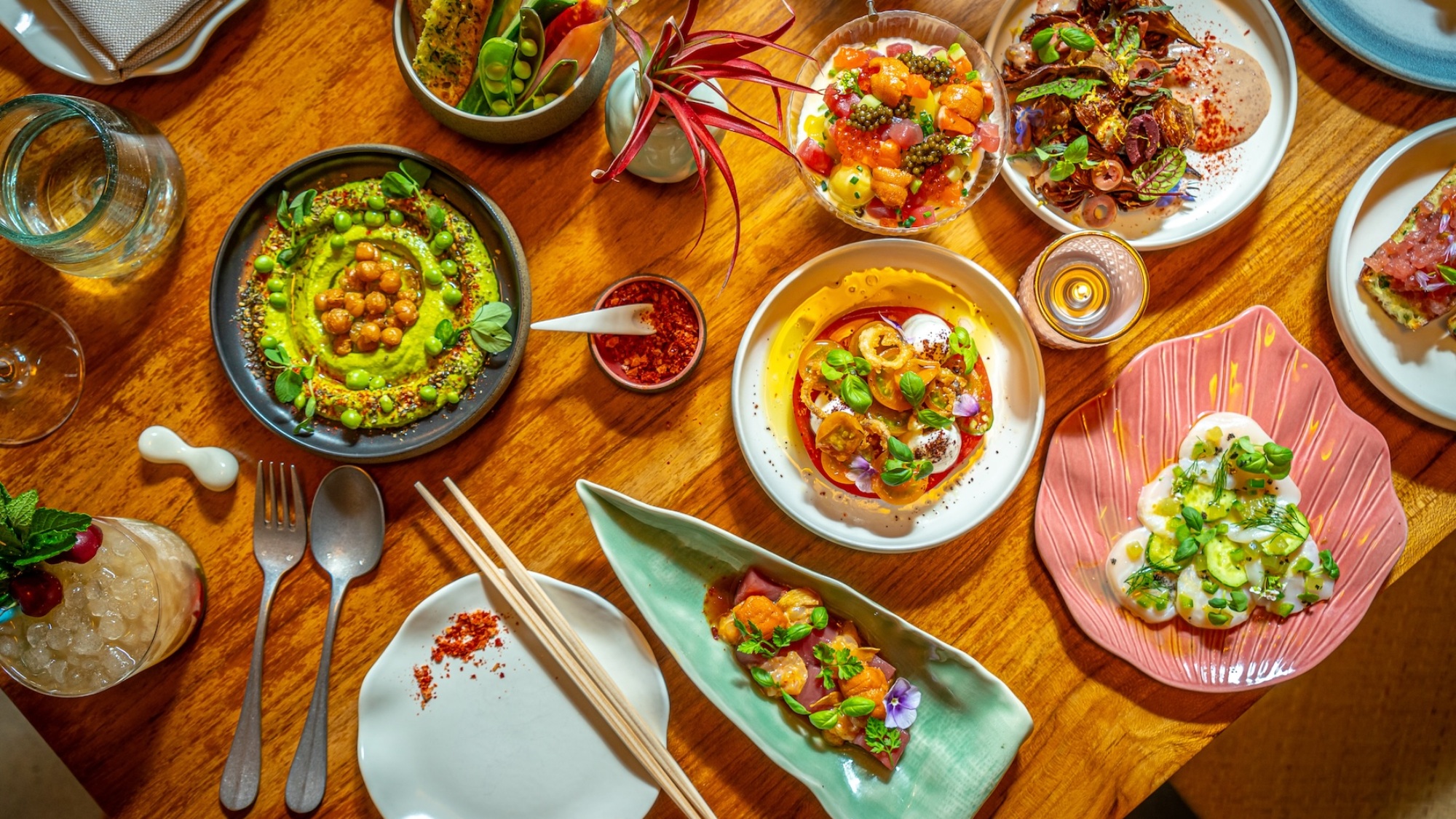
Five Dishes to Love on the Globally Inspired Balinese Menu at Ma•dé
At Ma•dé, the menu is a passport of sorts, stamped by various flavors from across the world. The intimate 25-seat Soho restaurant is like the cool little sister (and next-door neighbor) to Wayan. “Wayan” translates to first-born in Balinese and, accordingly, “Ma•dé” means second born.
Both restaurants are owned and operated by chef Cédric Vongerichten, his wife Ochi Latjuba Vongerichten, and their business partner Ezra J. William. But whereas Wayan focuses on the cuisine of Indonesia with a French touch, Ma•dé, which opened in April of last year, borrows its “beachy” influences from the coast of Bali. “I wanted to make it quite different, more of a global approach in terms of all of the ingredients and flavors that we use from all of our traveling,” says chef Vongerichten.


The family’s love of surfing has taken them to beautiful beaches and impressive surfing spots around the world, influencing the seafood- and vegetable-centric menu at Ma•dé, flexing the flavors of Thailand, Bali, Japan, France, and more. Although the dishes take inspiration from all over, many of the recipes at Ma•dé were developed at home, with Vongerichten testing and creating the menu while cooking for his wife and children. “Obviously not the same level as the restaurant,” he jokes, “but as a starting base.”
Each dish is served on unique dinnerware, handmade in Bali. “We keep it simple, but you eat with your eyes first when the plate comes in … or your phone,” laughs Vongerichten. Dishes at Ma•dé are served in all shapes and sizes with the intention of being shared. When navigating the menu, Vongerichten recommends ordering about two to three dishes per person, starting with a few crudos, then moving on to vegetables and larger, heavier dishes.
While it should be noted that every dish on his menu has a story to tell, the chef shared his thoughts about the five dishes that you must have on your table.


Lobster Dumplings
“Dumplings, for me, are fun to eat and fun to share,” says Vongerichten — and it’s clear his guests agree. In Ma•dé’s early days, the team eagerly observed diners’ orders come in night after night, and saw that the lobster dumplings were a bestseller.
“When you put a menu together, sometimes you are not sure what the signature dish will be — it’s the guest who chooses when they come in. This dish has become a signature dish for us and everything else pretty much rotates,” says Vongerichten.
The dumplings sit atop a beurre blanc, which is “a little like a bisque,” explains Vongerichten. His version, however, features citrusy flavors of lemongrass, Makrut limes, and ginger, borrowed from Indonesia and South Asia, that accentuate the soft texture of the lobster filling. Each dumpling is topped with terasi, an Indonesian shrimp paste sauce, that introduces aromatic flavors of tomato and chile to the dumplings. “A little dash goes a long way, and that’s where you get the spiciness from the dish without really burning … it makes it exciting for your tastebuds,” says Vongerichten.
To finish off the dish, Vongerichten adorns the dumplings with caviar, marrying a creamy saltiness to the sweet flavors of lobster and the acid and heat from the beurre blanc. Finally, the dumplings are topped with chives.


Scallop Crudo
Vongerichten reveals that while there are a few crudos on the menu, the scallop crudo is his favorite to start your meal with, perfect for opening up the palate with its carefully balanced acidity.
“I love the scallops,” says Vongerichten. “We get them in the shell live and we cut them daily, and slice them thinly daily. And you can feel it – I mean, the firmness, the sweetness of the scallop is unbelievable.”
The scallop crudo is a dish that rotates seasonally, with about eight different variations built around fresh diver scallops. “It’s a fun dish for me to play with every few months,” Vongerichten says, noting that recent seasonal variations for the dish have included citrus, cucumber, and rhubarb (which is currently being offered on the menu). In addition to the diced rhubarb, Vongerichten adds diced jalapeño, shiso leaves, sea beans, and a drizzle of jalapeño-infused olive oil.
For those curious about sea beans, Vongerichten compares the garnish to finishing a dish with molten salt. “Sea beans grow very close to the ocean, and that’s why they retain some brininess, or saltiness from the sea,” he explains. “We quickly blanch them in boiling water and throw them on ice. They are really beautiful and bright with a green, vibrant color.” Served on a pink plate that mimics the shell of a scallop, Vongerichten feels that this dish is a great representation of the coastal look and feel of a meal at Ma•dé.

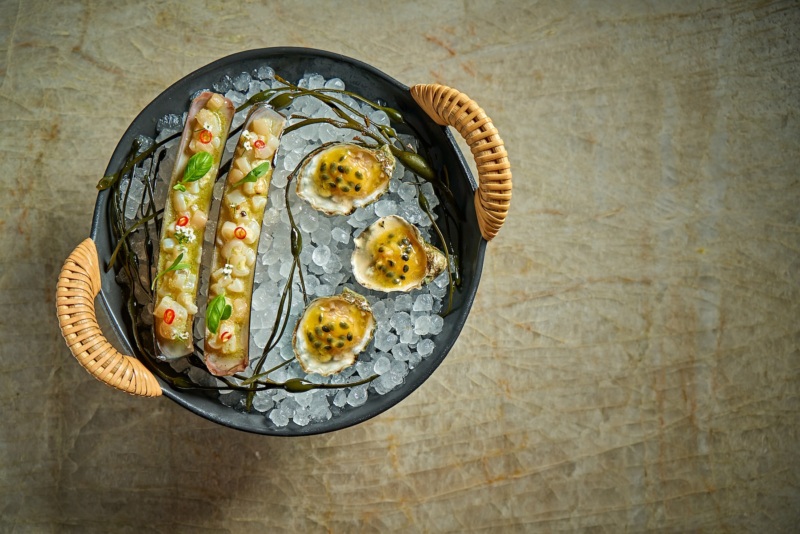
Oyster and Razor Clams
Although oysters and clams can be a popular starter among diners, Vongerichten is certain that this dish will create a standout memory for you, just as it musters up a memory for him. The oysters, specifically, were inspired by a memory from a family trip to Montauk: enjoying oysters and fresh fruit during a summertime meal. After that, he decided “it came naturally” to top his own oyster dish at Ma•dé with fruit.
Deciding on passionfruit because of the crunch that its seeds offer, Vongerichten crafts a passionfruit mignonette using shallots, vinaigrette, and a drop of sesame oil to lay on top of a bed of sweet petite oysters, which he describes as “sweet, lightly briny, with a clean and crisp finish.”
Vongerichten notes that as a small restaurant, Ma•dé has the advantage and luxury of ordering razor clams fresh rather than in advance. Sourcing this species is no easy feat because their harvest is so dependent on the weather – but Vongerichten insists on butchering and slicing them to order.
“They are very simply prepared because the ingredients speak for themselves,” says Vongerichten. “They get dressed with a little lime and olive oil vinaigrette. Then we put a little piece of cilantro, a piece of basil on it, and a little slice of chile – I always like a little bit that is meant to surprise and make your palate excited – and that’s it.”


Slow-Cooked Butterfish
While working on the research and development for this dish, Vongerichten learned that black cod can go by a few different names, one of them being butterfish. The fish is sourced fresh from Maine, its name coined by the texture of the fish, if cooked properly – and the kitchen at Ma•dé ensures that this dish lives up to the name.
“When you taste it, especially the way we cook it, it really melts in your mouth,” explains Vongerichten.
Marinated in simple miso and citrus flavors, the fish is baked to order at temperatures in the low 300s, serving as a delicate cooking approach to ensure the fish remains tender and juicy. Toward the end of the slow-cooking process, the top of the fish is quickly broiled to form a caramelized finish from the natural sugars. The dish is served with cipollini onions that are cooked until spoon tender for a note of sweetness, and to finish off the butterfish, Vongerichten tops the fish with baby greens and sliced leeks for a bit of crunchiness.
Alongside the lobster dumplings, the butterfish is another dish that guests often gravitate toward — because, in the words of Vongerichten, “this is like butter.”

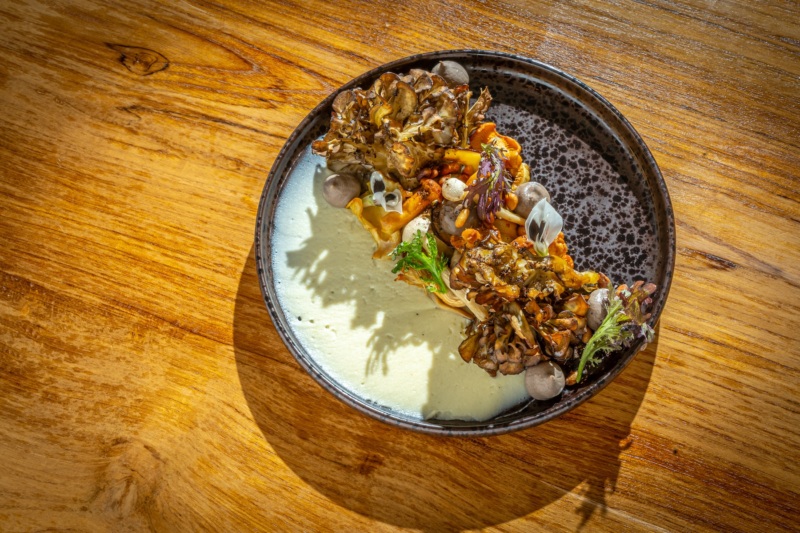
Warm Wild Mushrooms
Serving as a substantial vegetarian option, this dish is prepared using anywhere from seven to eight varieties of mushrooms depending on what is in season. Exceedingly savory, it can be enjoyed as a complement to heavier dishes on the menu such as the mussels, butterfish, beef, and octopus, or as a standalone vegetarian entrée.
Vongerichten first builds a creamy parmesan cheese spread incorporating onions, garlic, and Thai chile that sits at the base of the dish. He then prepares the mushrooms by sautéing, roasting, or poaching them, depending on what type of mushroom he’s working with. That mixture might contain black trumpets, porcinis, blue fruit varieties, shiitake varieties, hon-shimeji, and more. The mushrooms are placed on top of the creamy parmesan cheese, and topped with a sherry walnut vinaigrette, pine nuts for crunch, a bit of mushroom purée, market greens, and a Sichuan peppercorn powder that brings a surprising, slight numbing flavor to the palate.
Vongerichten is passionate about incorporating seasonal, fresh ingredients into his menu, down to the garnishes, so don’t be surprised if you bump into him at the Union Square Market, selecting his own market greens for this dish. The market greens rotate depending on what is most abundant; most recently, he opted for mustard green sprouts and baby leaves. “There’s a lot going on, but it all marries together,” says Vongerichten.
While other vegetarian dishes on the menu rotate, the warm wild mushrooms are a staple at Ma•dé. During truffle season, you can opt for a supplement of black truffle toppings on this dish – and others – if you’re looking to indulge.
Ma•dé is open every day for dinner from 5:30 to 11 p.m., with extended hours until midnight on Thursday, Friday, and Saturday. Brunch is served on the weekends from noon to 3 p.m
Jess Martino is a media professional living in New York City. Follow her on Instagram. Follow Resy, too.




